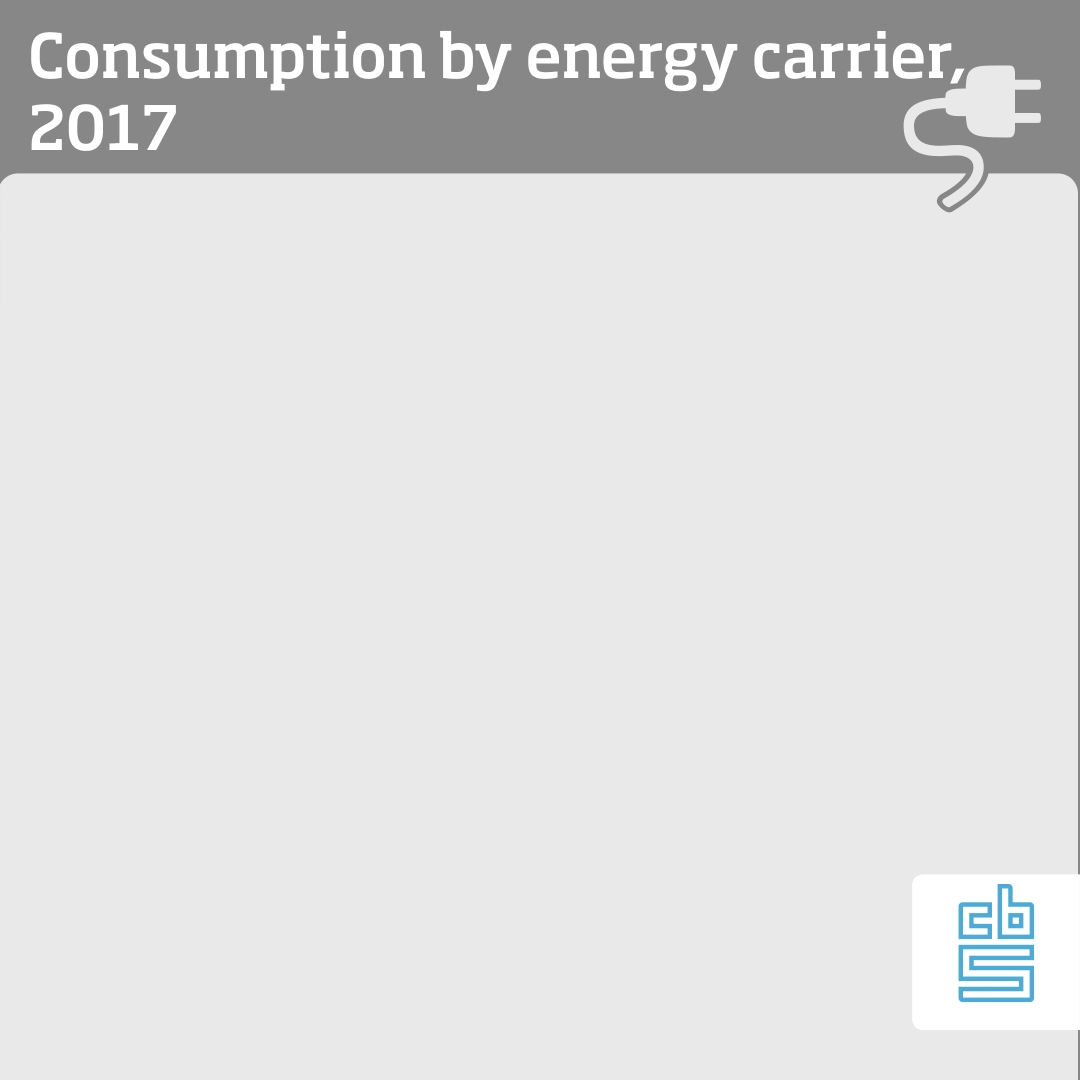Economy
Figures - Energy
Electricity consumption in the Netherlands has fluctuated around 120 billion kWh since 2006, peaking at over 123 billion kWh in 2008. Due to a number of factors, most notably the financial crisis of 2008, the limited economic growth that followed, and the savings made by new energy-efficient appliances, that level of consumption has never been reached since. Electricity is supplied by both domestic and foreign producers.
In 2016, energy consumption in the industrial sector increased by 1.5 percent compared to 2015. Both developments in industrial activities and efficiencies in energy consumption influence consumption of energy carriers. In recent years, industrial energy consumption has decreased, due primarily to the introduction of more energy-efficient production processes. Approximately half of the energy is generated using petroleum raw materials and products. The chemical and pharmaceutical sectors combined account for 63 percent of industrial energy consumption.
Natural gas production has fallen dramatically since 2013. Due to the safety risks associated with earthquakes caused by gas production in Groningen, the production ceiling has gradually been scaled back. In 2017 only 44 billion cubic metres of natural gas was extracted, almost half the amount in 2013. With less gas being extracted, the government’s natural gas revenues have decreased. Profits have come under further pressure due to the price of natural gas, which was lower in 2016 and 2017 than in preceding years for large-scale users.
Coal is used for the production of electricity, iron and steel. Coal consumption for electricity production increased sharply up to and including 2015 as new coal-fired power stations were gradually brought into service. Partly due to the decommissioning of three old coal-fired power stations at the end of 2015 and two in mid-2017, consumption in 2016 and 2017 once again fell by a quarter (to 10.2 billion kg). Coal consumption for iron and steel production has remained reasonably stable at around 4.5 billion kg, except for a dip in the years after the financial crisis of 2008.
In 2017, 10 percent more electricity was generated from renewable sources in the Netherlands than in the previous year: 17 billion kilowatt hours (kWh) compared to 15 billion kWh in 2016. Wind turbines generated the largest share of this total, with 58 percent, followed by biomass with 29 percent. Almost 13 percent was generated by solar panels, while the share of hydropower was limited to 0.5 percent. Wind and solar energy production is increasing year by year, while the contribution made by biomass is on the decline. The share of total electricity consumption covered by sustainably generated electricity increased from 12.5 percent in 2016 to 13.8 percent in 2017.
The consumption of motor fuels for road traffic rose once again in 2017 to reach 10.7 billion kg. More petrol in particular was consumed, a rise of 3.5 percent on 2016. Diesel sales also show an upward trend once again after years of decline, up 3 percent on 2016. LPG appears to have fallen out of favour for good, with consumption hitting 148 million kg, its lowest level ever. Compared to five years ago, the consumption of LPG has halved. Consumption of kerosene for international air traffic rose by 2.8 percent compared to 2016 to reach a record high.
In 2016, an average Dutch household consumed 1,300 cubic metres of natural gas for heating. There are major differences between various types of housing as regards the annual consumption of natural gas. The annual natural gas consumption of a detached house, for example, is 2.6 times higher than consumption for an apartment. The average electricity consumption per home in 2016 exceeded 2,900 kWh. Electricity consumption also depends on the type of housing. In apartments, electricity consumption is on average half of the consumption in detached houses: 2,070 kWh as opposed to 4,120 kWh.
The energy consumption per inhabitant dropped by 18 percent between 2000 and 2016, from 32.2 GJ to 26.4 GJ. Natural gas still accounts for the largest share of consumption: 75 percent, followed by electricity at around 15 percent. Renewable energy (4.5 percent) and heat (2.7 percent) mainly account for remaining consumption. Natural gas is mostly used for heating the home (80 percent) and consumption fluctuates from year to year, depending on the severity of the winter. Electricity consumption is less prone to fluctuation and was almost 6 percent higher in 2016 than in 2000.

In 2017, the total energy consumption in the Netherlands amounted to 3157 PJ. The main energy carriers were natural gas with over 41 percent of the total, petroleum (almost 39 percent) and coal (12 percent). Slightly more than 8 percent comes from renewable sources, nuclear energy and waste. Natural gas originates mainly from the Netherlands and is used to generate heat and electricity. A large proportion of crude oil and petroleum products are imported, and then re-exported. Petroleum and petroleum products are used to produce fuels and products such as plastics.
